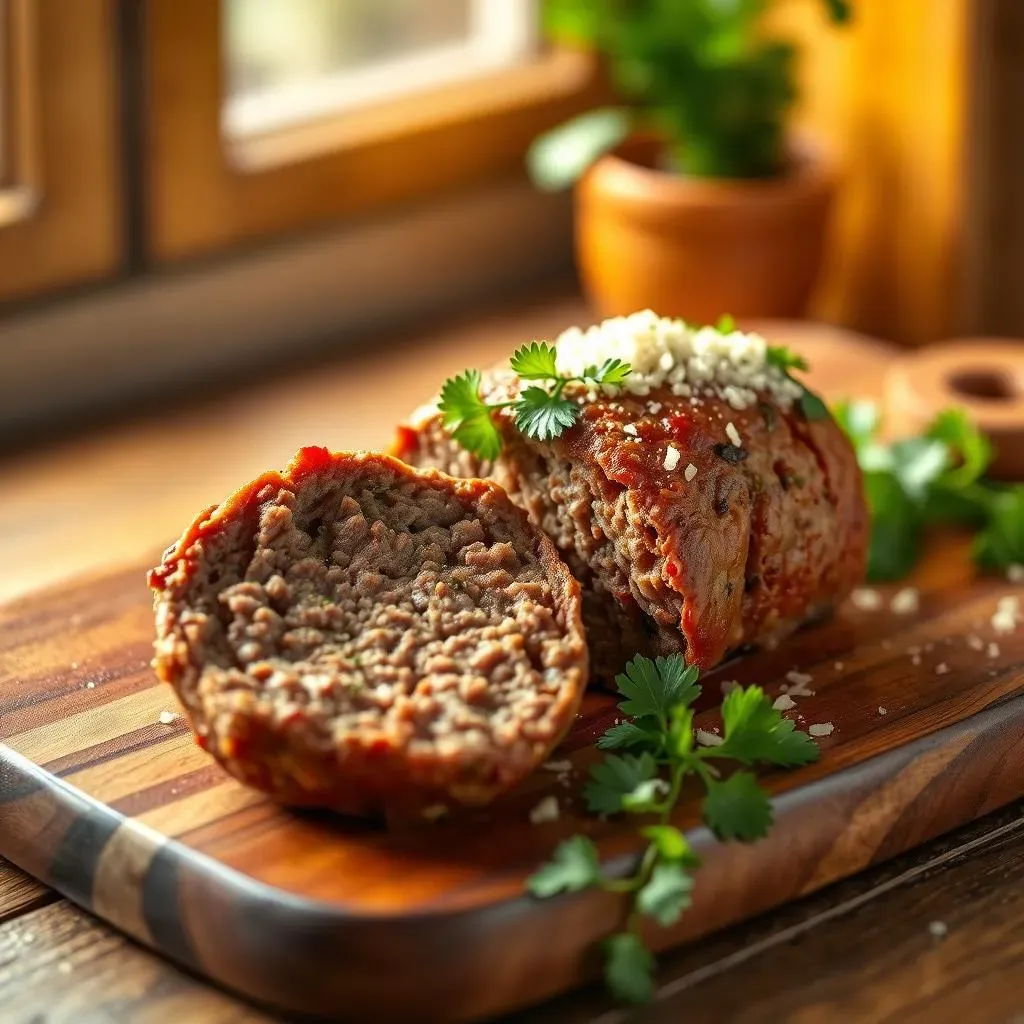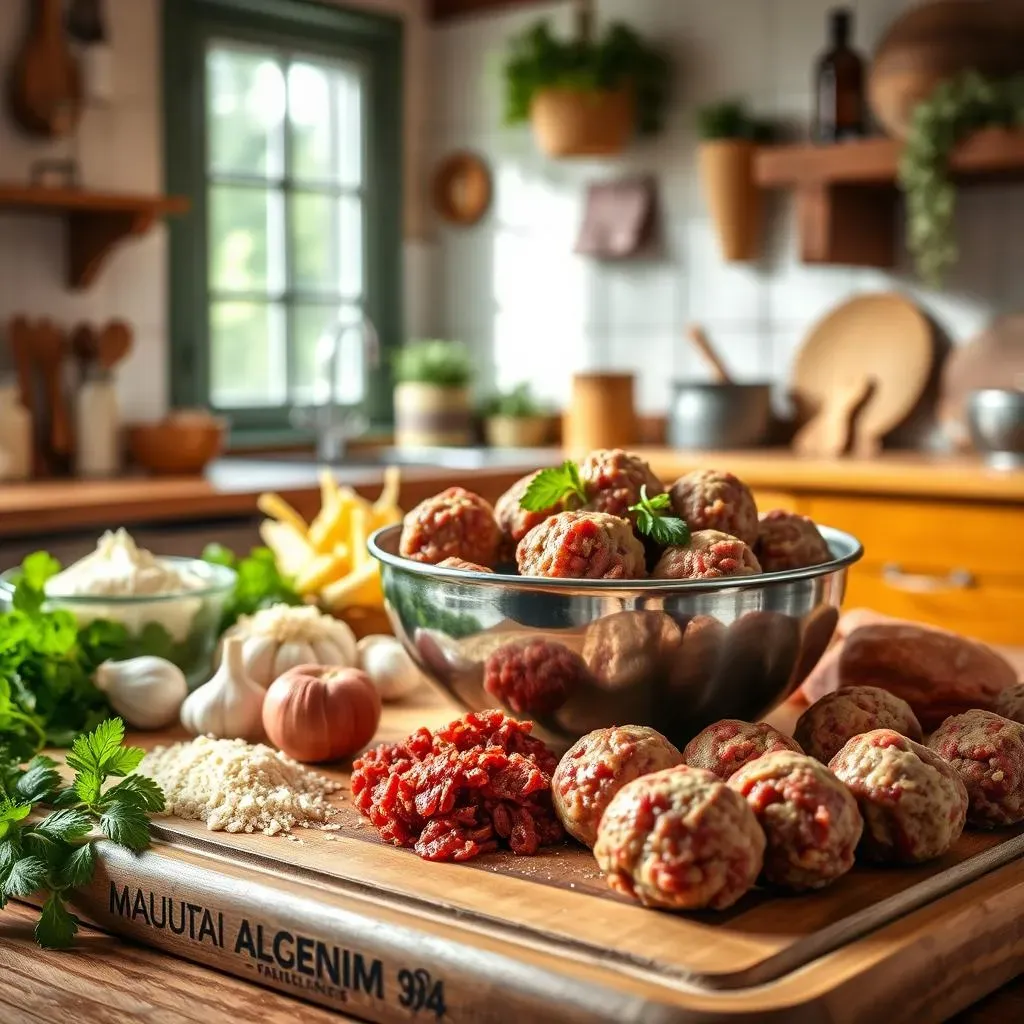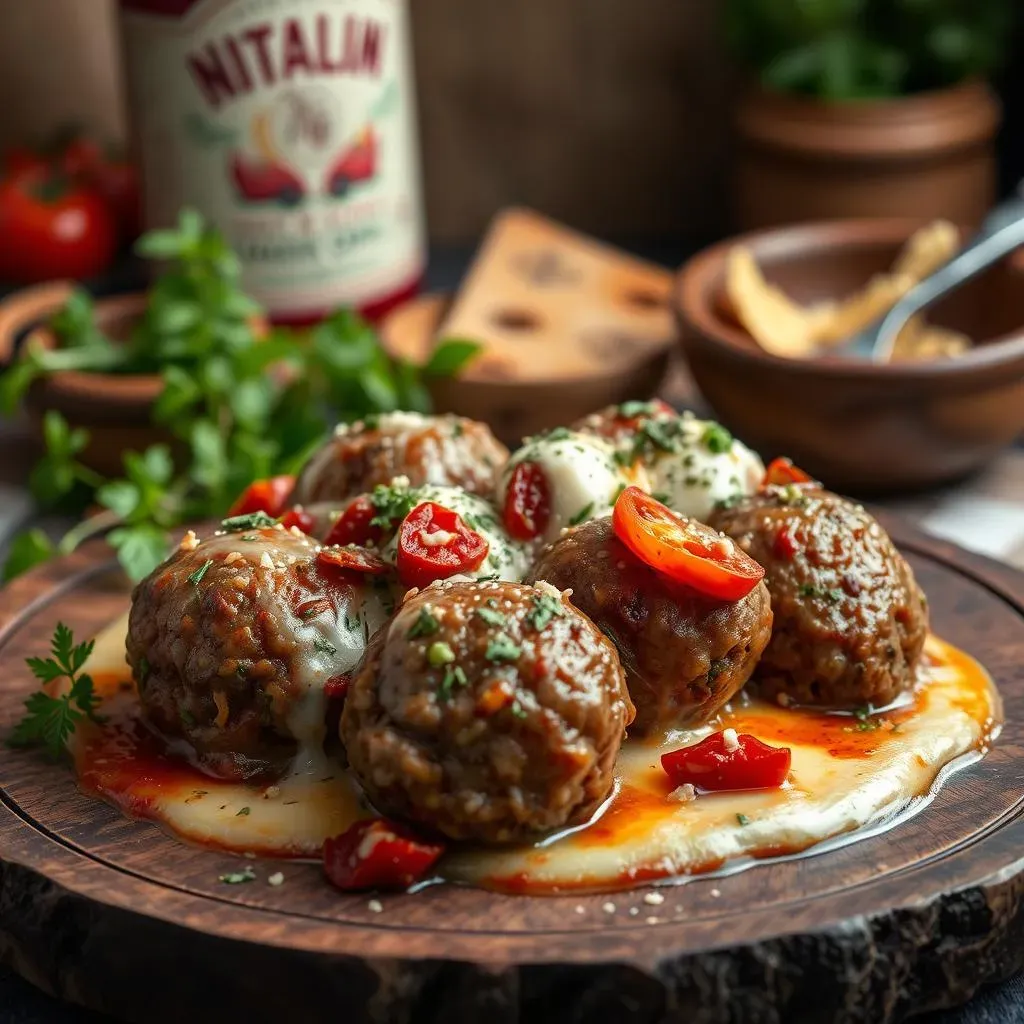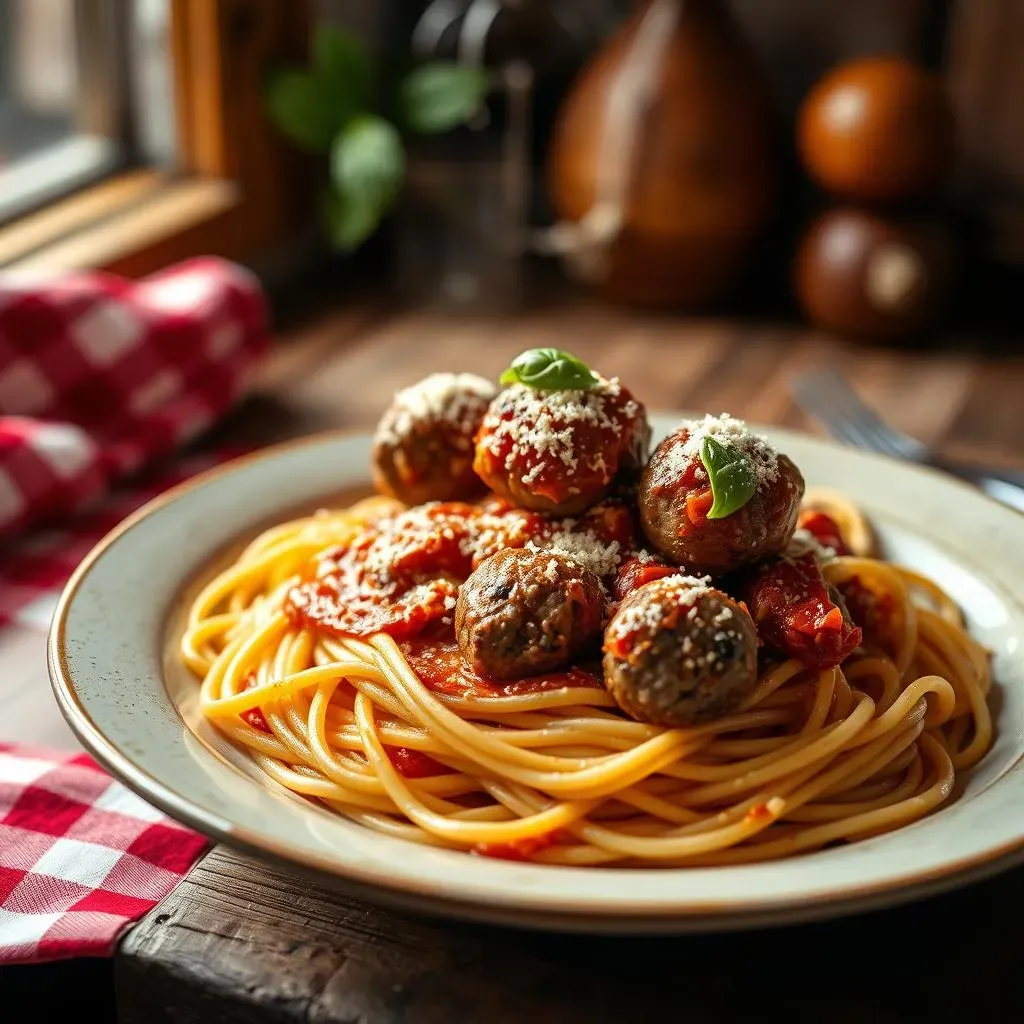Table of Contents
Are you ready to elevate your dinner game? This article is your passport to creating unbelievably delicious Italian meatballs, starring the star ingredient: beef! Forget bland, dry meatballs – we’re diving deep into the secrets of crafting juicy, flavorful orbs of meaty goodness. We'll start by exploring the best types of beef for your Italian meatball recipe, guiding you through the nuances of fat content and texture. Then, get ready for a detailed, step-by-step guide, walking you through each stage of the process, from expertly mixing the ingredients to achieving that perfect golden-brown broil. But the fun doesn't stop there! We'll explore creative variations on the classic Italian meatball recipe with beef, offering exciting twists and flavor combinations to inspire your culinary adventures. Finally, we'll explore the best ways to serve your masterpiece, whether you're a pasta purist or looking for a more adventurous approach. Get ready to impress your family and friends with your newfound meatball mastery! Let's get cooking!
Choosing the Perfect Beef for Your Italian Meatball Recipe

Choosing the Perfect Beef for Your Italian Meatball Recipe
Understanding Fat Content
The fat content of your ground beef is key to achieving tender, juicy meatballs. Leaner ground beef (90% lean or higher) will result in firmer meatballs that might be a bit dry. On the other hand, fattier ground beef (80% lean or lower) will yield incredibly tender, melt-in-your-mouth meatballs. The ideal balance is often found in the middle ground – around 85% lean. This provides enough moisture and flavor without making the meatballs overly greasy.
Think of it like this: the fat acts as a natural lubricant, keeping the meat tender as it cooks. It also adds richness and flavor. However, too much fat can result in greasy meatballs that lack structure. Experiment to find your perfect balance! For a leaner option, check out our beef vs. turkey meatballs comparison.
Lean Percentage | Texture | Moisture |
|---|---|---|
90%+ | Firm | Dry |
85% | Tender | Moist |
80% | Very Tender | Moist, possibly slightly greasy |
Exploring Different Cuts of Beef
While ground beef is the most common choice, different cuts offer unique flavor profiles and textures. Ground chuck, for instance, is a versatile option with a good balance of fat and lean meat. Ground sirloin is leaner, resulting in a slightly firmer meatball. For a richer, more intense flavor, consider using a blend of ground chuck and ground sirloin. You could even explore more premium options like Wagyu beef for an extra special occasion.
Don't be afraid to experiment! A blend of different ground meats can create a truly unique and delicious meatball. For example, a combination of ground beef and pork is a classic Italian approach, adding depth and richness to the flavor. If you're looking for a different take, you might find our recipe for beef and pork meatballs interesting.
- Ground Chuck: Balanced fat and lean
- Ground Sirloin: Leaner, firmer
- Ground Beef Blend: Customizable flavor and texture
Fresh vs. Frozen: The Meatball Debate
For the best results, always use fresh ground beef. Frozen ground beef can sometimes result in drier meatballs, as the freezing process can affect the moisture content. If you must use frozen ground beef, make sure to thaw it completely before using it in your recipe. Ensure it's thoroughly thawed to prevent uneven cooking.
“The best meatballs are made with fresh, high-quality ingredients,” says renowned Italian chef, Antonio Carluccio. Using fresh ground beef allows for a better distribution of fat, resulting in a more tender and flavorful meatball. For more tips on achieving perfect meatballs, check out our guide on beef meatball recipe tips.
Mastering the Art of the Italian Meatball: A StepbyStep Guide

Mastering the Art of the Italian Meatball: A StepbyStep Guide
Mixing the Magic: The Meatball Mixture
The key to a truly exceptional meatball lies in the perfect blend of ingredients. Start by gently combining your chosen ground beef with breadcrumbs. Don't overmix! Overmixing develops the gluten in the breadcrumbs, resulting in tough meatballs. The breadcrumbs are crucial; they absorb excess moisture, preventing shrinkage and ensuring a tender interior. A good ratio is usually around ½ cup of breadcrumbs per pound of meat, but feel free to adjust to your preference. Adding a beaten egg acts as a binder, further enhancing the texture and holding everything together beautifully. For a richer flavor, grate in some Parmesan cheese. Now, let's talk seasonings! Finely minced garlic and onion add a pungent depth, while Italian seasoning provides a fragrant herbaceous note. Don't forget salt and pepper to taste—these simple seasonings are your secret weapon for unlocking the full potential of your meatball mixture.
Remember, the goal is a cohesive mixture, not a dense, overworked mass. Once you've achieved a well-combined mixture, it's time to move on to shaping your masterpieces. If you're looking for some fun variations, check out our beef meatball recipe ideas for inspiration.
- Gently combine ground beef and breadcrumbs.
- Add a beaten egg as a binder.
- Incorporate grated Parmesan cheese for richness.
- Season generously with minced garlic, onion, Italian seasoning, salt, and pepper.
Shaping and Sizing: The Art of the Meatball
Now comes the fun part: shaping your meatballs! Using slightly wet hands (this prevents sticking!), gently roll the mixture into even-sized balls. Consistency in size ensures even cooking. A small ice cream scoop or a tablespoon is your best friend here—it ensures uniformity and makes the process much more efficient. The size of your meatballs is entirely up to you; larger meatballs offer a more substantial bite, while smaller ones are perfect for appetizers or pasta dishes. Consider the final dish when deciding on the size. Too large and they might not cook through; too small and they might dry out.
Once you have your perfectly formed meatballs, it's time to get them cooking! Whether you choose to bake, pan-fry, or simmer them, the next steps will bring your culinary creation to life. For a complete guide on cooking methods, you might want to explore our beef meatball recipe tips article.
Meatball Size | Cooking Time (approx.) | Serving Suggestion |
|---|---|---|
Small (1 inch) | 15-20 minutes | Appetizer, pasta topping |
Medium (1.5 inches) | 20-25 minutes | Pasta sauce, subs |
Large (2 inches) | 25-30 minutes | Main course |
Cooking to Perfection: Achieving Meatball Nirvana
The final step is cooking your meatballs to perfection. Baking is a popular choice, ensuring even cooking and a beautiful golden-brown crust. Simply arrange your meatballs on a baking sheet lined with parchment paper, ensuring they aren't overcrowded, and bake at 375°F (190°C) until cooked through—about 20-30 minutes depending on size. An internal temperature of 165°F (74°C) confirms they are perfectly cooked and safe to eat. Alternatively, pan-frying offers a delicious browned exterior, but requires careful attention to prevent burning. Simmering the meatballs in your favorite tomato sauce is another classic method, allowing them to absorb the rich flavors of the sauce while they cook gently. No matter your chosen method, remember to use a meat thermometer to ensure they reach the safe internal temperature.
And there you have it! Your perfectly cooked Italian meatballs. Ready to take your skills to the next level? Explore our collection of beef meatball recipe ideas for inspiration. From classic marinara to creamy Alfredo, the possibilities are endless!
Beyond the Classic: Variations on the Italian Meatball Recipe with Beef

Beyond the Classic: Variations on the Italian Meatball Recipe with Beef
Spicing Things Up: Flavor Adventures
Let's move beyond the classic Italian flavors! Think about adding a kick with a pinch of red pepper flakes for a spicy meatball. Or, for a more complex flavor profile, incorporate a blend of herbs like oregano, basil, and thyme. A touch of fennel seeds adds a unique licorice-like note that pairs surprisingly well with beef. For a sweeter twist, try adding a tablespoon of finely chopped sun-dried tomatoes to the meatball mixture—the sweetness complements the savory beef beautifully. These small additions can dramatically change the character of your meatballs, opening up a world of exciting possibilities.
Don't be afraid to experiment with different spice blends! A Moroccan-inspired meatball, featuring cumin, coriander, and cinnamon, could be a delightful departure from tradition. Or perhaps you'd prefer a hint of smoky paprika for a touch of warmth. The possibilities are truly endless. For more ideas, you might enjoy checking out our beef meatball recipe ideas page.
- Red pepper flakes: Adds heat
- Herbs (oregano, basil, thyme): Enhances savory notes
- Fennel seeds: Unique licorice flavor
- Sun-dried tomatoes: Adds sweetness
Cheese Please: Elevating Your Meatballs
Cheese is a fantastic way to enhance the flavor and texture of your meatballs. Beyond the classic Parmesan, consider adding mozzarella for a gooey, melty interior. Ricotta cheese adds creaminess and moisture, while crumbled feta provides a tangy contrast. A blend of cheeses creates a truly luxurious meatball. Experiment with different types and quantities to find your perfect combination. Provolone, Asiago, and even a sharp cheddar can add exciting new dimensions to your meatballs. Remember to add the cheese towards the end of the mixing process to prevent it from becoming too sticky.
Adding cheese is a simple way to add richness and complexity to your meatballs. Consider incorporating different cheeses to create unique flavor profiles. If you are looking for a more complete guide on different cheese pairings, check out our article on beef meatball recipe ideas.
Cheese Type | Flavor Profile | Texture Impact |
|---|---|---|
Parmesan | Savory, sharp | Adds firmness |
Mozzarella | Mild, milky | Creates a melty center |
Ricotta | Creamy, mild | Adds moisture |
Serving Suggestions: The Best Ways to Enjoy Your Italian Meatball Recipe with Beef

Serving Suggestions: The Best Ways to Enjoy Your Italian Meatball Recipe with Beef
Pasta Perfection: A Classic Pairing
Let's be honest, spaghetti and meatballs is a culinary classic for a reason! The rich, savory meatballs nestle perfectly in a bed of tender spaghetti, coated in a vibrant tomato sauce. For an extra touch of decadence, sprinkle with freshly grated Parmesan cheese and a scattering of fresh basil leaves. It's simple, satisfying, and always a crowd-pleaser. This classic combination is a timeless favorite for a reason, and it's incredibly versatile. You can easily adapt the sauce to your preferences, whether you prefer a simple marinara or a creamy tomato sauce. For a complete guide on pasta sauces, you may want to check out our Italian-style beef meatball recipe.
But don't limit yourself to spaghetti! Other long pasta shapes like linguine, fettuccine, or even bucatini work equally well. Consider experimenting with different pasta shapes to find your favorite combination. For those looking for a lighter option, zucchini noodles offer a healthy alternative without sacrificing flavor. For inspiration on other pasta dishes, check out our beef meatballs with pasta article.
- Spaghetti
- Linguine
- Fettuccine
- Zucchini Noodles
Beyond Pasta: Creative Serving Ideas
While pasta is the most common pairing, your culinary creativity shouldn't stop there! Imagine these succulent meatballs nestled in a hearty meatball sub, oozing with melted mozzarella cheese. Or, picture them atop a crispy pizza, adding a meaty dimension to this Italian favorite. They also make a fantastic addition to soups and stews, lending their rich flavor to a warm and comforting bowl. For a truly unique experience, consider using your meatballs as a filling for stuffed peppers or other vegetables.
The versatility of meatballs is truly remarkable! They can be incorporated into countless dishes, offering a flavorful and satisfying element. For more creative serving ideas, you might find our guide on beef meatball recipe ideas useful.
Dish | Description |
|---|---|
Meatball Sub | Hearty sandwich with melted mozzarella |
Pizza Topping | Adds a meaty twist to classic pizza |
Soup/Stew | Enhances the flavor of comforting soups |
Make-Ahead Magic: Meal Prep Made Easy
One of the best things about meatballs is their make-ahead potential! Prepare a large batch on the weekend and enjoy delicious meals throughout the week. Simply store the cooked meatballs in an airtight container in the refrigerator for up to 5 days, or freeze them for up to 3 months. Reheating is a breeze; simply simmer them in your favorite sauce or bake them in the oven until heated through. This makes meal prep incredibly easy and efficient, allowing you to enjoy delicious, homemade meals even on busy weeknights. For tips on reheating, have a look at our reheating beef meatballs article.
“Preparing meatballs in advance is a lifesaver for busy families,” says food blogger, Sarah Miller. Make-ahead meals allow you to enjoy delicious, homemade food without sacrificing time. For more make-ahead meal ideas, check out our beef meatball pasta bake recipe, perfect for meal prepping.